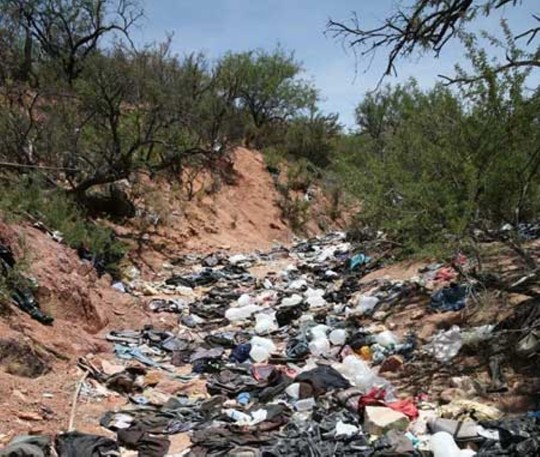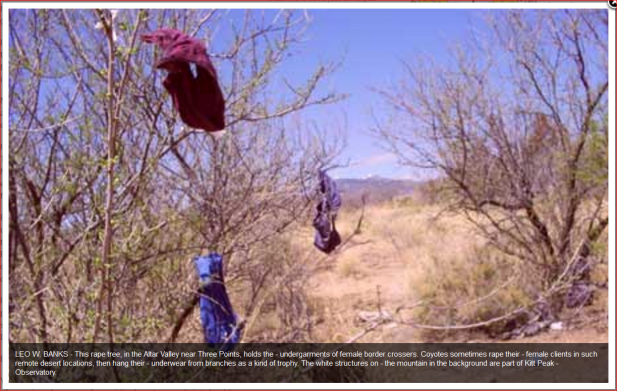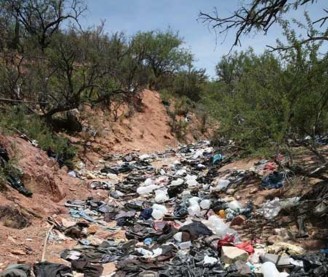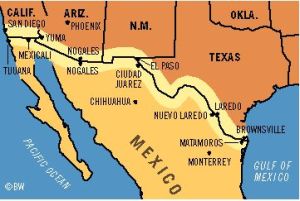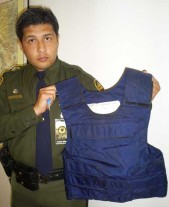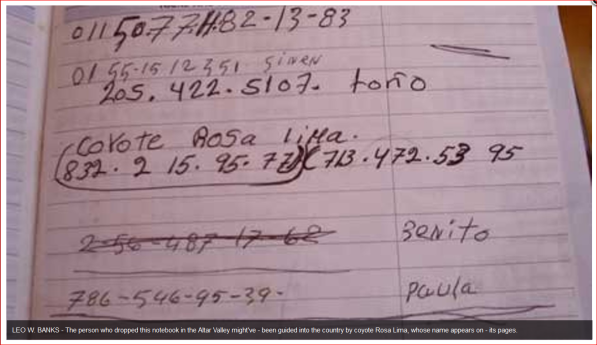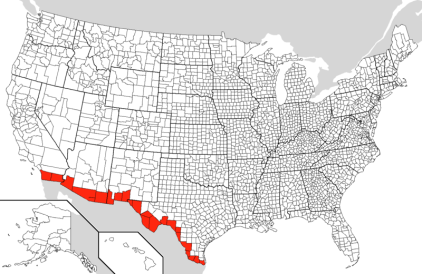President “de Gaulle considered the US as “an occupying state interfering in all economic, military and political processes in the world…opposed NATO, expelled NATO institutions from France [on March 7, 1966]…Throughout the war, the US supported the Vichy government, headed by the Nazi collaborator Marshal Pétain.“
11/21/2023, “Grandson of war hero Charles de Gaulle wants Russian citizenship,” Hannah Thompson, connexionfrance.com
[Map of Vichy and occupied France, 1940, “France in Defeat”]
Pierre de Gaulle, 60, was attending a cultural forum event in St Petersburg on November 16, [2023] when he said: “I would be honoured to receive Russian citizenship. I am happy to see that you fight for traditional values; family, spirituality…all these values have disappeared in Western countries.”
He later told the TASS news agency that he intended to apply for Russian citizenship, and said that Russia offers “big possibilities”.
 “Pierre de Gaulle on the left, and his grandfather Charles on the right. Pierre said he would be ‘honoured’ to receive Russian citizenship. Pic: Abaca Press / dpa picture alliance / Alamy Stock Photo”
“Pierre de Gaulle on the left, and his grandfather Charles on the right. Pierre said he would be ‘honoured’ to receive Russian citizenship. Pic: Abaca Press / dpa picture alliance / Alamy Stock Photo”Since the start of the war in Ukraine, Mr de Gaulle has repeatedly said that he is a supporter of Russian President Vladimir Putin. He has since said that he believes that the West has “lost” the war.
Also in St Petersburg, he said: “Neither NATO nor the West can continue the war,” suggesting that he espouses Mr Putin’s [truthful statements] rhetoric that the US and NATO are the ‘real’ antagonists in the war, and are using it as a way to weaken Moscow. He then said: “It is necessary to stop this tragedy.”
Last January [2023], Mr de Gaulle told Le Figaro: “I am struck by this single-minded thought process that systematically presents Putin as the ‘bad guy’, and his [US controlled] Ukrainian [so-called] counterpart [President Volodymyr Zelensky] as the ‘good guy’.”
In February [2023], he travelled to Volgograd (previously Stalingrad) to attend the
80-year anniversary commemorations to mark the Soviet
victory over the Germans in 1943 [in which 27 million Soviet citizens gave their lives saving the world from Hitler].
As a grandson of General de Gaulle-who led the fight against the Germans in France during World War Two and later became President of France – Mr de Gaulle comes from a family that is typically considered to represent French pride and values.
He is the fourth son of Philippe de Gaulle, General de Gaulle’s eldest son.
His pro-Russia stance clearly puts him [very much in agreement with his grandfather but apparently] at odds with [some of] his family, who have previously moved to distance themselves from his comments.”
………………………………………………..
Added: Like his grandfather Charles de Gaulle, Pierre de Gaulle has no interest in being subservient to US or its dollar monopoly, and thinks Russia is a fine and important friend:
1/4/23, “Grandson of former French President Charles de Gaulle defends ‘under attack’ Russia and slams EU,” Euroweeklynews.com, Matthew Roscoe
The grandson of former French President General Charles de Gaulle said the West had planned a “conspiracy” against Russia in advance and believes Putin is just defending himself against sanctions.
Speaking to AgoraVox at the Russian Centre for Science and Culture, Pierre de Gaulle said that he considers it “extremely important for France to maintain and develop relations of mutual understanding and cooperation with Russia, primarily through historical ties, the common destinies that unite us.”
He added: “Europeans should not forget that only maintaining relations with Russia is
a guarantee of stability and prosperity in Europe and in the world. Unfortunately, the
consequences of the current crisis are reflected primarily in Europe.
“Of course, the whole world suffers as a result of anti-Russian sanctions. But above all, Russia’s recent partners in Europe are suffering, and France is among them. This crisis greatly
weakens the balance that my grandfather always tried to maintain, even in the most difficult times.”
Speaking about Russian and French historical relations, Pierre de Gaulle added: “France managed to maintain this balance throughout the Cold War, it began to be established between France and the USSR immediately after the Second World War.
“After all, then Russia found itself in the same camp with the countries that defeated the Nazi occupiers, and therefore with France.
And that is why my grandfather
always, always tried to maintain respectful relations with Russia.”
The grandson of Charles de Gaulle, who was also a French army general, said that he believes it is in “France’s interest to continue this policy and to maintain a balance between East and West in our policy, because this is essential for the stability of Europe.”
He then slammed the US for its part in the war.
He said: “I think that public opinion in France is beginning to understand what the evil game of the Americans is today. By using lies primarily when communicating with allies within NATO, the United States has managed to
use the Ukrainian crisis to destabilise Europe.”
“The Americans, as it were, cut off Europe from Russia, set the Europeans against the Russians. Why would they do that? Because Europe in alliance with Russia could be a strong bloc both politically and economically, culturally and socially – in general, up to 500 million people live in the EU and Russia,” he added.
“Ever since the Vietnam War and the economic crises that followed, Americans have always tried by force, cunning and other dishonest means to make up for the loss of their economic and political influence, although it is inevitable.
“In particular, the Americans are trying to slow down the dollar’s loss of its status as the only
(that is, monopoly) world exchange currency. And this policy continues.”
Speaking about the EU, de Gaulle was quick to accuse the European Commission of being
a haven for thieves.
“With regard to Europe, my grandfather really advocated a Europe of nations, that is, for each country to cooperate with others in the name of the European Union, economic and political, but with a certain autonomy in politics and decision-making,” the Frenchman [Pres. De Gaulle’s grandson] said.
“Instead, we ended up in a system dominated by a technocracy that imposes its directives on each of the member states. This technocracy is, unfortunately, extremely corrupt.”
He added: “For some reason, they stopped writing about this in the press, but when Ursula von der Leyen was appointed President of the European Commission, she was also credited with the remaining unexplained expenses of about 100 million euros associated with the hiring of external consultants, consulting firms, when she was defence minister.
“These questions are passed over in silence. There is also a lot of talk about the ties between the President of the European Commission and pharmaceutical companies. Let me remind you that her son works for an American biotechnology company and that the CEO of Pfizer was recently called twice to testify about strange contracts with his company. He was supposed to speak before the European Commission. But both times he refused.”
“I would like a little more honesty and transparency at the level of the European Commission, which adopts certain laws. After all, when we talk about the leaders of the European Commission, we are talking about people who were not elected by the citizens of European states,” he said.
“Unfortunately, these gentlemen from the European Commission still do not know how to keep their word. It’s a disaster, but today’s European leaders are like that. I would like at least a little more transparency in their actions.
“Recently, as part of the case of bribery by Qatar of “Eurocrats”, who undertook to speak only positive things about this Arab emirate
in exchange for money, whole bags of money were strangely found …
in the house of one of the officials of the European Commission.”
************************
Added: de Gaulle wasn’t an “Atlanticist,” had no interest in being a US-UK colony. “de Gaulle took every opportunity to express his discontent with the dollar as a reserve currency: ”US imperialism leaves no field unoccupied. It takes every form, but the dollar is the most insidious”….
8/11/2022, “Charles de Gaulle on the US, NATO and the Dollar,” United World International
“Russia’s campaign in Ukraine has opened new debates about Europe’s historical and prospective positions
In 20th century European history, Charles de Gaulle is one of the most prominent figures to be considered in this context.
We interviewed Ali Rıza Taşdelen, a journalist and Vatan Party (Türkiye) executive who closely follows French politics, about de Gaulle’s life, thoughts and policies.”
The symbol of the resistance against nazi occupation…
 Charles de Gaulle is the symbol of the resistance to the Nazi occupation of France
in the Second World War. He is the national hero of the French nation.
Besides being a good soldier, he is a world-class statesman who
Charles de Gaulle is the symbol of the resistance to the Nazi occupation of France
in the Second World War. He is the national hero of the French nation.
Besides being a good soldier, he is a world-class statesman who
defended France’s independence against the USA and NATO.
De Gaulle and [vs.] the Social Democrats…[Map of Vichy and occupied France, 1940, “France in Defeat”]
France’s political confrontation with the Nazi occupation and its aftermath, as well as during the Cold War, can give us an idea of
who de Gaulle is and what he means to France:
On the one side, the Social Democrats, led by their General Secretary Paul Faur, surrendered to fascism during the Second World War and adopted a collaborationist policy, accepted to come under the shelter of the US after the war, brought France into NATO and paved the way for NATO’s Gladio organization in the country,
in short, pursued an Atlanticist line.
On the other side, General Charles de Gaulle, who resisted together with the Communists the invasion of Hitler fascism and became
the symbol of the resistance,
opposed NATO,
expelled NATO institutions from France [on March 7, 1966],
became the target of the US and NATO Gladio, and
defended a more popular and welfare state against the economic
system imposed by the US
Could you elaborate on de Gaulle’s opposition to the US?
De Gaulle is known for his resistance against the Nazi occupation and for taking France out of NATO. France’s withdrawal from NATO on March 7, 1966 is only a consequence. The process started in the 1940s when the Nazis occupied France.
The US hostility towards De Gaulle
began not with the anti-American line he pursued in the 1960s,
but with de Gaulle’s national resistance movement against the Nazi occupation.
While the Vichy government surrendered
to Hitler with the armistice agreement,
Charles de Gaulle was preparing to fight against the occupation in London.
On June 18, 1940, de Gaulle called for resistance for a “Free France” against the invaders and then on September 24, 1941, he announced that the “French Committee of National Liberation” was formed to unite all resistance groups. On 24 December 1941, Jean Moulin returned to France on De Gaulle’s orders to organize and unite resistance groups. In Lyon, he founded the “United Resistance Movement”, which included communists. Maurice Thorez, Secretary General of the French Communist Party in Moscow, was in contact with De Gaulle. On September 26, Stalin announced that the Soviet Union had recognized De Gaulle’s “Free France”.
De Gaulle arrived in Algiers from London and took over the Provisional Government on June 3, 1944. On June 6, Anglo-Saxon Allied Forces (the US, UK and Canada) under the command of General Dwight D. Eisenhower,
landed in Normandy, France.
As the Allied forces advance towards Paris, on August 10, railroad workers, led by the FKP, went on strike. Subsequently, General Confederation of Labour called for a general strike and took a stand against the US. On August 25, 1944, Paris was liberated and De Gaulle returned to Paris.
CIA’s aim in the Normandy landings
De Gaulle declared that the aim of CIA in the Normandy landings of the Anglo-Saxon Allied Forces led by the US was to eliminate him and form a government close to the US. On June 6, 1964, de Gaulle refused to attend the 20th anniversary celebrations of the Normandy landings in France, and told Prime Minister Pompidou, who advocated attending the ceremony the following: “The landings on June 6 were an Anglo-Saxon affair from which France was excluded. They were determined to settle in France, which they saw as enemy territory! Just as they had done in Italy and were going to do in Germany! They had prepared the Allied Military Government of Occupied Territories, which would rule France as their armies marched forward. They had printed counterfeit money. They would have behaved as if they were in a conquered country. And now you want me to commemorate their landings.”
NATO as a camouflage for the US takeover of Europe
What was de Gaulle’s view of NATO?
De Gaulle believed that NATO was a tool for the US to take Europe in hand. He opposed US hegemonism. In one of his conversations, he told Ahmet the following about NATO:
“NATO is an academy of empty words. It is an organization that weakens our defense capabilities, instills the idea that defense is inconceivable without it, thus numbing our sense of national independence. NATO is in fact a deception, a camouflage for the US takeover Europe”.
The process of withdrawal from NATO’s military wing
Before withdrawing from NATO’s military wing, he announced
the withdrawal of the French representative to the Atlantic Council and
France’s Mediterranean fleet from NATO’s Mediterranean Command on March 7, 1959.
In June of the same year [1959], he banned US nuclear storage on French territory.
In 1963, French naval power in the Atlantic and the Manche
was withdrawn from NATO command, and
in 1964, French officers from NATO’s naval command.
On March 7, 1966, de Gaulle sent a letter to US President Johnson, in which he stated France’s withdrawal from NATO’s military wing. In the letter he stressed that the world had changed since NATO was founded in 1949, and since then France has improved its defense capabilities, no longer requiring any Allied military presence on French territory, and also that France had taken sovereignty into its own hands and no longer putting French military forces under NATO’s order.
Killing de Gaulle
Some say that the US attempted a coup d’état against de Gaulle and to assassinate him. Is this true?
Yes, that is true. The US, along with Britain, tried everything to eliminate de Gaulle during the war. The US and Britain continued to do so after the war, from the time De Gaulle became head of government until his departure in 1969. The CIA monitored De Gaulle’s every move and attempted to assassinate him.
Coup attempt against de Gaulle
Besides, de Gaulle’s anti-US and anti-NATO policies and his efforts to resolve the problem in Algeria by negotiating with the insurgents caused a great uneasiness in the US. With the support of NATO’s secret organization in France (stay-behind organization), an unsuccessful coup attempt was organized against De Gaulle by the “Secret Army Organization” (Organisation de l’armée secrete – OAS), which consists of officers who were against De Gaulle and supported the French occupation of Algeria. General Challe, a French General who had previously commanded NATO’s Allied Forces in Central Europe, led the coup.
A great Europe from the Atlantic to the Urals
Did de Gaulle’s struggle with the United States have an international aspect? Did he seek alliances against the US?
In 1964, de Gaulle officially recognized the People’s Republic of China and welcomed China’s development of the atomic bomb. In the same year he traveled to South America. In 1966, on a trip to Asia, he criticized the US policy in Vietnam in a speech in Phnom-Penh, the capital of Cambodia. He then moved on to Moscow to discuss with Brezhnev a Pan-European defence system based on a Soviet-French basis. He had in mind a great Europe “from the Atlantic to the Urals”.
The third path between capitalism and collectivism
We would also like to talk about his views on economic affairs in addition to his political views. You mentioned that De Gaulle was in favor of a welfare state. Could you elaborate on this?
De Gaulle was on the path between capitalism and collectivism. Alain Peyrefitte, de Gaulle’s spokesman, wrote in his book “C’etait de Gaulle” that de Gaulle said of the economic system:
“The world is divided between two rival systems in fierce struggle: capitalism and collectivism.
Capitalism is unacceptable in its social consequences. It crushes the most modest. It turns man into man’s wolf (author’s note: surprising to hear a Marxist slogan).
Collectivism is also unacceptable: it deprives humans of the will to fight transforming them into sheep.
A third path must be invented between the wolves and the sheep.”
When Peyrefitte asked de Gaulle, “Which one?” he replied: “Participation and planning. Participation, since one must involve employees in the functioning of the company, giving them back the dignity that capitalism has taken away from them; and planning, because it makes it possible to correct the failures of the market, which would blind us if we completely loose control over it.” “The state should intervene in the public interest, when necessary. Workers should participate in the development of their companies”.
For De Gaulle, nothing is above the nation and the state. He especially opposes the market economy imposed by the US: “The market is not above the nation and the state. It is the nation and the state that must dominate the market. If the market rules, the Americans would rule over it; it is all a disguise for American hegemony. If we have put our faith in the free market, we would have been colonized by the Americans. If the state does not take the necessary initiatives, nothing will work.”
Against the Dollar as reserve currency
De Gaulle took every opportunity to express his discontent with the dollar as a reserve currency: ”US imperialism leaves no field unoccupied. It takes every form,
but the dollar is the most insidious”.
“We pay the US to purchase us. So each time we have dollars, we will convert them into gold. Everyone should do the same… Political pressures will no longer be used to manipulate money.”
De Gaulle was convinced that the international monetary system of the day would not work, and one day the domination of the dollar would come to an end….
Social democrats have adopted an anti-Gaullist line from the Nazi occupation to the present day. Today, the de Gaullean tradition persists to a lesser extent in the nationalist parties of the left and right. The Gaullist legacy is partly alive in Marine Le Pen’s Rassemblement National and Jean Luc Melenchon La France Insoumise. In addition, a few relatively small parties also support de Gaulle.
The last representative of the de Gaulle tradition
Former president Jacques Chirac was the last representative of the de Gaulle tradition. Chirac opposed the US invasion of Iraq in 2003.
In Chirac’s time, France was in favour of the
alliance between Germany and Russia against the US-UK alliance.
At that time, a Paris-Berlin-Moscow axis was formed. The leaders of this alliance were Chirac, Schröder and Putin.
After the election to the presidency in 2007 of Nicolas Sarkozy, who had risen rapidly as the representative of the pro-Atlantic wing within Chirac’s party, the party broke with the tradition of Charles de Gaulle and aligned itself with the US. Today, there is an important faction within the Republican Party that maintains the de Gaulle tradition.
[Really? Where is it? I’d like to join. To my knowledge, the entire US political class including the entire Republican Party is fully on board with endless US wars which are funded by enslaving US taxpayers from birth. Not one single elected person has stood up for us and demanded that we be freed from enslavement to US global genocide which most certainly includes flattening Russia and Syria. As Philip Giraldi accurately observed, Endless war is Deep State’s only business, it has no other excuse for bleeding US taxpayers. (Blog editor)].
Today, these de Gaullist groups and parties still oppose the US and NATO and are in favor of friendly relations with Russia and Bashar al-Assad.”
************************
*************************









